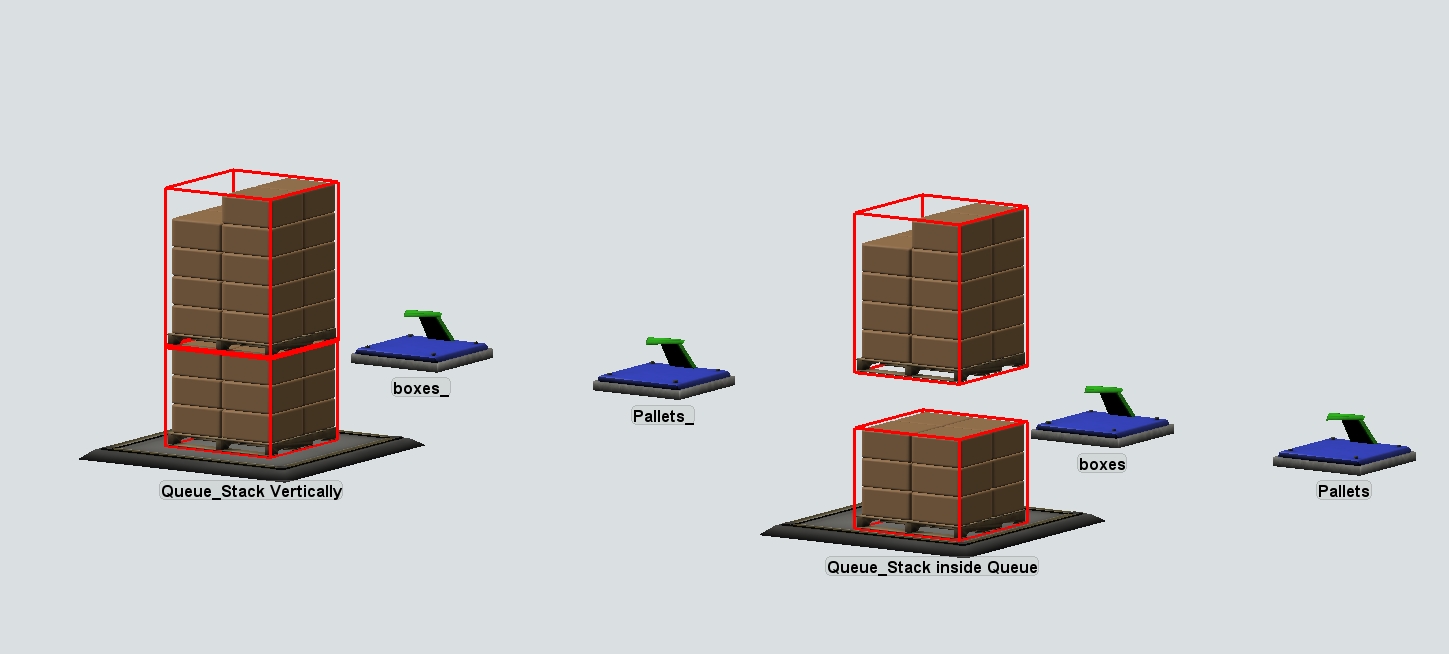I try to build a pallet variant which set its size to the maximum height of its content. I need it for the warehouse. The basic works. Unfortunately the stacking method of a queue behaves a bit strange. I move on entry boxes to the last entered pallet. If I stack pallets vertically it behaves correct. If I stack just inside the second pallet moves up, when the amount of boxes rises above the amount of boxes of the first pallet. As you can see in the picture, there is a gap between the red frames of pallets on the right. Why does this happen?
question
What is the difference of item placement vertically and inside in a queue?
1 Answer
Well, you certainly are developing something quite unusual here, aren't you? It's no wonder to me that the standard stacking methods for the queue are not acting as you would expect.
I'm not sure what you ultimately want to achieve, but since you are already working outside the intended behavior of the queue and of a pallet, you might want to use the option "Do Nothing" for the Item Placement field, and do all of your own stacking behavior in the OnEntry trigger of the queue and/or of the pallet.
I do know that the "Stack Inside Queue" option for Item Placement keeps its own internal record of where items have been positioned, and updates this record with each entry event. The custom code you've written in the "Pack Contents" field of the pallet uses the moveobject() command which in turn triggers the entry events to fire on the queue, which in turn is going to mess up the internal records the queue uses for the "Stack Inside Queue" behavior.
@Cliff King, many thanks for your answer. I described my intention in my question. The warehouse rack stacking algorithm evaluates just the dimension of items not loaded items. A loaded pallet has got only the dimensions of an empty pallet. If I place standard loaded pallets into a slot, the slot can receive several loaded pallets. I must convince the slot stacking algorithm that a loaded pallet size exceeds the simple empty pallet size. The pallet size must involve the pallet and its content. My approach moves entering items of the pallet directly onto a pallet object in the drawsurrogate node. And during this action the size of the pallet is set to the maximum height of the loaded pallet. Now the slot stacking algorithm places perhaps only one loaded pallet into a slot, because the item is much larger.
I have found an atypically behavior in a queue for pallets of this kind, as I moved additional items to the last pallet in a queue. I didn’t think, that I must think about the placement of items in a queue if I move items to a container item in a queue. Now I know that I must be aware of strange behaviors and have to set a different placement parameter for queues, if I have my advanced pallets in a model. The placement parameter inside doesn’t work appropriately, stacking vertically works as intended.
Aha! Makes sense. I understand now. Thanks!
It sounds like you've got it all working, but just in case it helps, I think the transfernode() command is a "quiet" way of moving one node/object into another node/object that doesn't trigger any system events.
question details
11 People are following this question.

